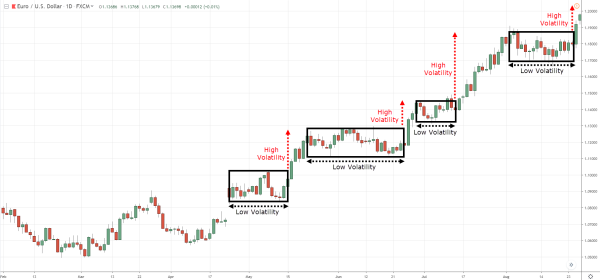Intraday Trading Tips - Strategies & Basic Rules
A stop loss is a trigger used to automatically sell a stock if the price falls below a specified limit. For investors who have used short selling, a stop loss m
- by Gaurav Grover 2023-07-26 07:22:23
Intraday trading is riskier than investing in the regular stock market. Most traders, especially beginners, lose their money intraday trading due to the high volatility of the stock markets. The Convention states that one should not risk more than 2% of their total trading capital on a single trade to ensure the right risk management in intraday trading. It is important to know intraday trading tips, especially for beginners, to understand the basics of such trading to avoid losses: the risk of ignorance is greater than the market risk itself.
Intraday Trading Tips
Here are some intraday trading tips in the Indian share market that will help investors make the right decision:
Choose two or three liquid shares
Day trading involves squaring open positions before the end of the trading session. That is why it is advisable to choose two or three large-cap shares, highly liquid. Investing in mid-size or small-caps can result in the investor holding these shares due to low trading volumes.
Develop an informed short-term trajectory beforehand and stick to it
The following points are essential pieces of a short-term trajectory:
1. Set your entry level and target price beforehand. It is common for a person's psychology to change after purchasing the shares. As a result, you may sell even if the price sees a nominal increase. Because of this, you may miss out on the opportunity to benefit from higher profits because of the price increase.
2. Keep your benefits once you reach the target. Uninformed greed can lead you to hold a stock for longer than necessary and increase the risk of a price drop. If you insist on staying, be sure to readjust the stop loss price to meet the new expectations.
A stop loss is a trigger used to automatically sell a stock if the price falls below a specified limit. For investors who have used short selling, a stop loss minimizes losses in case the price rises beyond your expectations.

Realign your strategy for intraday trading (as opposed to long-term investment)
Value investment adopts fundamentals, while the former considers the technical details. It is common for day traders to pick up shares if the target price is not reached. Then wait for the price to recover to get your money back. This is not recommended because the shares may not be worth investing in as they have been purchased for a shorter duration only.
Research Your Wishlist Thoroughly
Investors are advised to include 8-10 stocks in their wish lists and research them thoroughly. It is important to know about corporate events, such as mergers, bonus dates, stock splits, dividends, etc., along with their technical levels. Using the internet to find resistance and support levels will also be helpful. Of course, you need to research the basic concepts and terminology of the stock market.
Don't move against the market
Even experienced professionals with advanced tools cannot predict market movements. There are times when all technical factors represent a bull market; However, there may still be a decrease. These factors are indicative only and do not provide any warranty. If the market moves against your expectations, it is important to exit your position to avoid large losses. Day trading provides higher leverage, which effectively provides decent returns per day. Being happy is crucial to succeeding as a day trader.
Time the Market:
Experts often recommend that people avoid trading in the first hour once the markets open.
Exiting the position under unfavorable conditions:
For trades that provide profits and price give reversal (the price is expected to show reverse trends), it is prudent to book the profit and exit the open position. Also, if the conditions are not favorable for the position, it is recommended to exit immediately and not wait for the stop-loss trigger to be activated. This will help traders to reduce their losses.

Invest Small Amounts that won’t Pinch:
It is not uncommon for beginners to walk away once they make a few profits during the trading day. However, markets are volatile, and predicting trends is not easy even for a seasoned professional. In such cases, beginners can easily lose all their investments. This is why an important tip during the day is to invest small amounts that the user can afford to lose. This will ensure that people do not face financial difficulties if the markets do not favor them. Traders should not risk more than 2 percent of their total trading capital on a single trade to ensure proper risk management.
Map Resistance and Support:
The price of each share fluctuates within a range from the first 30 minutes of the start of the trading session, which is known as the opening range. The highest and lowest prices during this period are assumed to be resistance and support levels. It is recommended to buy when the stock price exceeds the upper opening range and to sell if the price falls below the lower opening range.
Always Close All Open Positions:
Some traders may be tempted to take delivery of their positions if their targets are not met. This is one of the biggest mistakes and it is crucial to close all open positions even if traders have to book a loss. Failing to close exposes the trader to overnight risk (for example, a market crash in USA or Europe)
Spend time on the actual monitoring and execution
Day trading is not for full-time working professionals. Traders need to be able to monitor market movements throughout the market session (from the opening bell to the close) to allow them to make the right calls as needed.
Monitor Intraday Trading indicators
When it comes to booking profit in day trading, you will require to do a lot of research. For the same purpose, you need to follow some tips. Intraday trading tips are often considered the holy grail; This, however, is not entirely accurate. Intraday Trading indicators are beneficial tools when used in combination with a comprehensive strategy to maximize returns.
Intraday Time Analysis
When it comes to day trading, daily charts are the most commonly used charts that depict price movements over a one-day time frame. These charts are a popular day trading technique and help to illustrate price action between the opening and closing bells of the daily trading session. There are several methods in which intraday trading charts can be used. These are some of the most commonly used charts during the trading day on the Indian stock market.

Learn more about intraday time analysis.
Final checklist:
- Choose two or three liquid shares
- Develop an informed short-term trajectory beforehand and stick to it
- Realign your strategy for intraday trading (as opposed to long-term investing)
- Dig deep into your wish list
- Research your Wish list thoroughly
- Time the Market:
- Exit the Position under unfavorable conditions:
- Invest incomparably small amounts:
- Resistance and support chart:
- Always close all open positions:
- Spend time on the actual monitoring and execution
- Monitor Intraday Trading indicators
Intraday Time Analysis
How to choose stocks for Intraday Trading
To succeed as a day trader, it is important to know how to choose stocks for day trading. People often cannot make a profit because they do not choose the right stocks to trade. Day trading, if not managed properly, can have drastic consequences on the financial well-being of users. The lure of making big profits in a short period of time can attract traders. However, with incomplete understanding and knowledge, day trading can be detrimental. Day traders are always faced with the inherent risks that exist in the stock markets. Price volatility and fluctuating daily volume are two factors that affect the stocks picked for day trading.
To balance the risk taken, with higher returns, here are some advanced intraday trading strategies to follow:
Opening Range Breakout (ORB):
This intraday trading strategy is widely used by professional and amateur traders. To maximize the potential of this strategy, it is recommended to combine it with optimal use of indicators, careful evaluation of market sentiment, and strict rules. ORB has many variations; Some traders may choose to trade large breakouts from the opening range and others choose to place their trades on the breakout of the opening range. The time period for offers varies between 30 minutes and three hours.
Demand-Supply Imbalances:
An important intraday trading tip for beginners is to look for stocks that have strong supply-demand imbalances and choose those as entry points. Financial markets follow the normal rules of supply and demand: the price falls when there is no demand for more supplies and vice versa. Users should learn to identify these points on the price chart by researching and studying the historical movements.
Choose a risk-reward ratio of 3:1:
Traders, especially beginners, need to understand the proper risk-reward ratio. At first, finding stocks that offer a potential risk-reward ratio of at least 3:1 will be beneficial for making a profit when investing in the stock market. This strategy will allow you to lose little while giving you the opportunity to win big even if you lose most of your trades.
Use the Relative Strength Index (RSI) and the Average Directional Index (ADX):
Combining these two intraday trading strategies to find buying and selling opportunities can help traders make a profit. The RSI is a technical momentum indicator that compares recent gains and losses to identify overbought and oversold stocks. ADX is useful and is used to identify when prices are showing strong trends. In most scenarios, if the RSI crosses the upper limit, this indicates a sell trade and vice versa. However, when you combine the RSI and the ADX, intraday traders buy when the RSI crosses the upper limit and vice versa. The ADX is used as a trend identifier to help users make buying or selling decisions.
Conclusion
Intraday trading involves trade settlements on the same day. Most traders try to make less profit on their trades. The golden intraday tip is to follow the market trend to help make a profit.

POPULAR POSTS
Rupee Forecast 2025: Key Drivers Behind INR Weakness Against the US Dollar
by Shan, 2025-08-11 07:32:23
August 2025 IPO Preview: Big Listings from JSW Cement, NSDL, Knowledge Realty & SME Stars
by Shan, 2025-07-30 11:51:27
Ola Electric Q1 Results FY26: Revenue Falls 61%, Net Loss at ₹870 Cr - MoveOS 5 in FocusOla
by Shan, 2025-07-14 12:22:55
HAL, BEL & Data Patterns: 3 Defence Stocks Riding India's ₹50,000 Cr Export Ambition
by Shan, 2025-06-26 10:00:16
India GDP Forecast 2025-26 Raised to 6.5% by S&P: Key Drivers & Global Risks Explained
by Shan, 2025-06-26 10:30:46
Dalal Street Outlook: 5 Key Market Triggers to Watch This Week
by Shan, 2025-06-16 12:32:04
What is the Bond Market & How Does It Impact Your Investments?
by B2B Desk, 2025-02-05 09:42:55
RECENTLY PUBLISHED

Loan EMIs to Drop as RBI Slashes Repo Rate - Full MPC December 2025 Highlights
- by Shan, 2025-12-05 11:49:44

Pine Labs IPO 2025: Listing Date, Grey Market Premium, and Expert Outlook
- by Shan, 2025-11-05 09:57:07

The Agentic Revolution: Why Salesforce Is Betting Its Future on AI Agents
- by Shan, 2025-11-05 10:29:23

Top 10 Insurance Companies in India 2026: Life, Health, and General Insurance Leaders Explained
- by Shan, 2025-10-30 10:06:42

OpenAI Offers ChatGPT Go Free in India: What’s Behind This Big AI Giveaway?
- by Shan, 2025-10-28 12:19:11

Best Silver Investment Platforms for 2025: From CFDs to Digital Vaults Explained
- by Shan, 2025-10-23 12:22:46




 Subscribe now
Subscribe now 